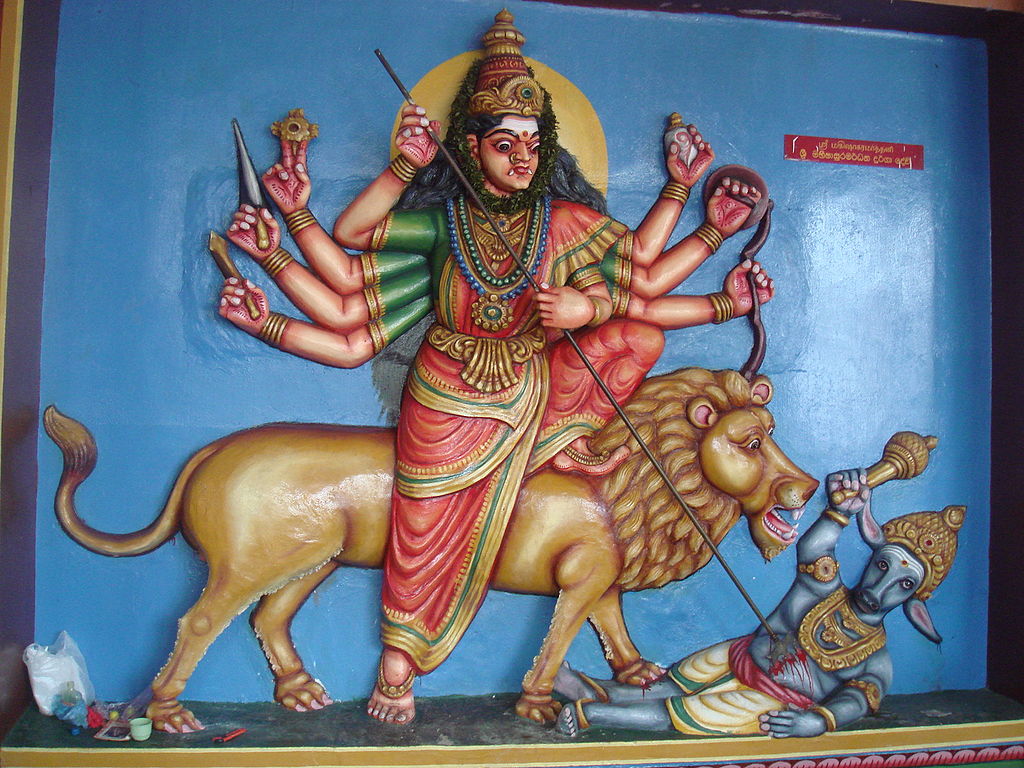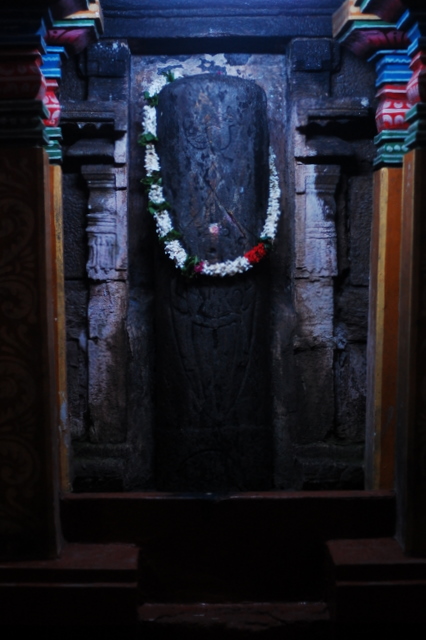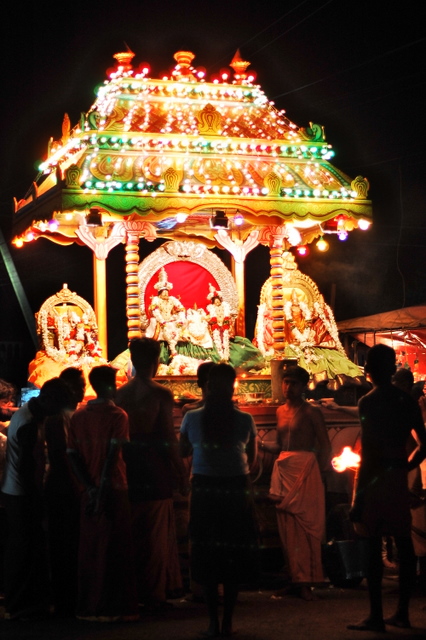Munneswaram temple is an important regional Hindu temple complex in Sri Lanka. It has been in existence at least since 1000 CE, although myths surrounding the temple associate it with the popular Indian epic Ramayana, and its legendary hero-king Rama. The temple is one of the ancient Pancha Ishwarams dedicated to Shiva in the region.
Shrine’s History
Munneswaram temple is situated in Munneswaram village, the center of the spiritual and religious life of the people dwelling in a medieval administrative division called Munneswaram Pattuva. For most of the temple’s existence, Munneswaram Pattuva has had over 60 villages for which Maradankulama provided political leadership. The Pattuva belonged to an even bigger medieval division called Demala Pattuva ruled by semi-independent Tamil chiefs subject to Sinhalese kingdoms. The presiding deity is called Sri Munnainathar and the goddess is called Sri Vativampika Devi. The temple has historically been associated with the nearby pearling and fishing town of Chilaw, as well as the landed gentry of the surrounding villages who provided the resources to maintain the temple. Proximity to the trading routes and to the port provided an opportunity for transmission of ideas and people from India to Sri Lanka.
The Pattuva has many temples dedicated to the higher echelons of Hindu or Buddhist deities, and to village guardian deities such Ayyanar or Ayyanayake, Viramunda, Kadavara and Bandara. Anthropologist Rohan Bastin speculates that the main Siva temple was once a minor shrine dedicated to village guardian deity Munisvaran that was transformed into a major Siva temple due to royal patronage. The temple was already an established temple by the 11th century CE, as it had issued coins by then. The temple began under the patronage of Pattuva chiefs and was probably constructed during the early part of the 10th century CE.
A ferry transported traders, pilgrims and chroniclers such as Ibn Battuta from Tenavaram temple, Tevan Thurai to the Chera and Chola kingdoms of Tamilakam, stopping at Puttalam of the Jaffna kingdom and sailing the Gulf of Mannar during the 14th century CE. The Siva temple is historically attested in grants and in local literature. The Kali temple is a popular sorcery and cursing shrine associated with animal sacrifices and spirit possession. Spirit possession of devotees was noted by the Jesuit priests who left behind records of it in the 16th century. The temple dedicated to the Sinhala deity Ayyanayake is administered by a local Sinhalese family. The Buddhist temple Pushparamaya Vihara is a post-19th century CE addition. The Ganesha temple, located to the south-west of the main temple is the newest amongst the Hindu temples and was built during the early 19th century by artisans from South India.



Shrine’s Map Location and How to Go There
Events Celebrated at This Shrine
The Munneswaram temple is well known for its celebration of Navaratri and Sivarathri functions. Navaratri lasts for nine days and is dedicated to various aspects of the presiding goddess, whereas Sivarathri is dedicated to Siva. Both these functions primarily attract Hindus to the temple. The annual Munneswaram Festival is an important part of the temple calendar and it attracts Hindus, Buddhists, Catholics and even Muslims. Until the 1830s the festival lasted up to 18 days but since the 1960s it lasts for 28 days in the months of August and September. The festival begins with the hoisting of the temple flag. This is followed by 13 days of internal temple processions conducted in the outer pathways of the Siva temple. On each day of the festival, the images of Ganesha, Skanda, and the presiding consort goddess are paraded around the temple. Local Pattuva village deity temples also have festivals that coincide with the annual festival. Villagers belonging to Maradankulama and Uddappu sponsor a day each of the 28-day festivals.
Devotees visit the temple to attend the daily pujas and make their offerings. Booths are erected outside for the sale of food, drink, brassware, pottery, cloth and holy images. On the penultimate day of the festival, there is a procession, when the image of the goddess is placed upon a huge wooden chariot and pulled around the temple by devotees. On the final day of the festival, two large chariots are drawn by the devotees to the Deduru oya, a local river for the thirtham ceremony when the images are dipped into the river. At the same time, thousands of devotees also jump into the river. After the holy bath, the procession goes back to the temple along with a route through Chilaw, accompanied by traditional Nadeswaram and Thavil musicians. The procession then passes the Ayyanayake and Kali temples prior to entering the main temple













































